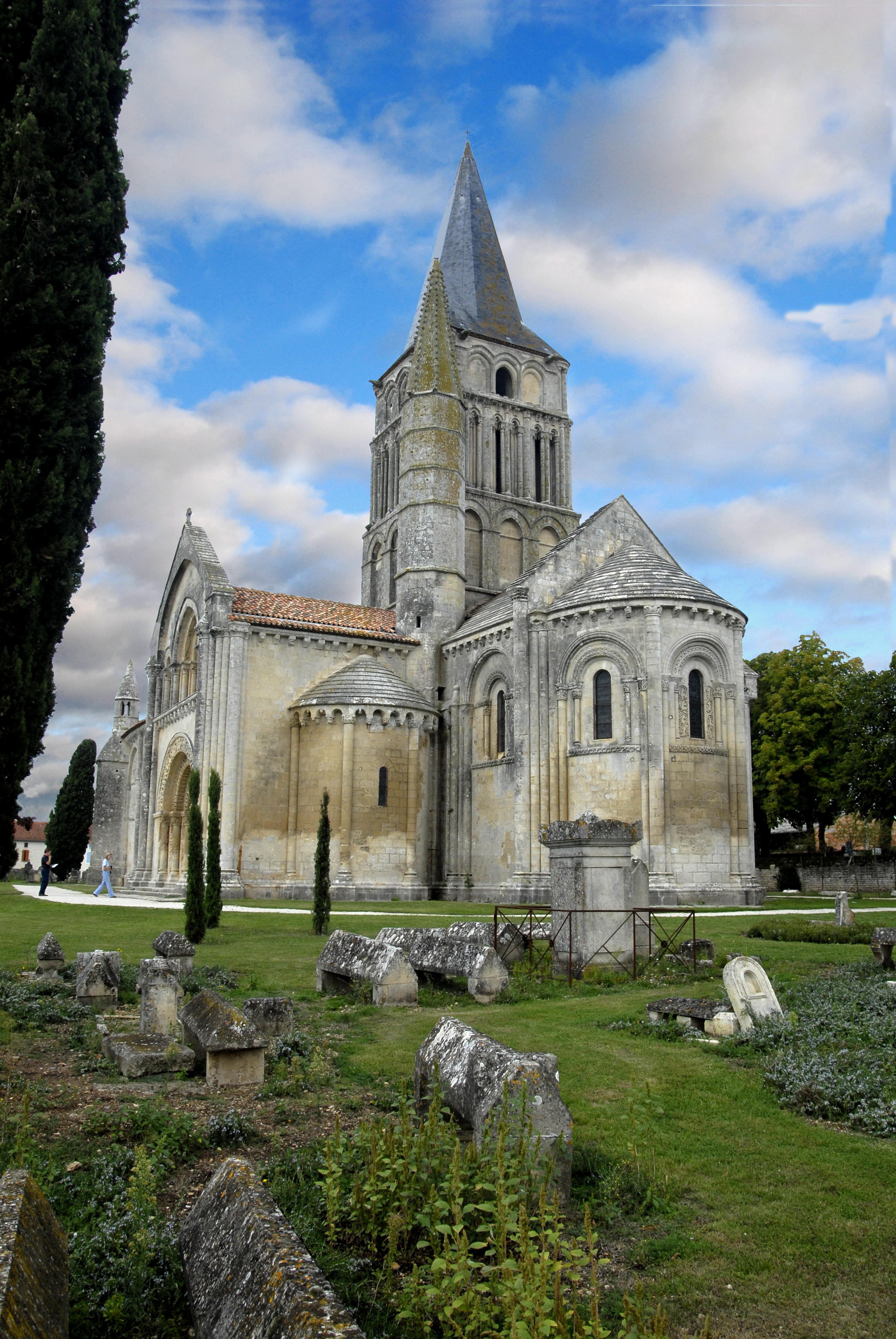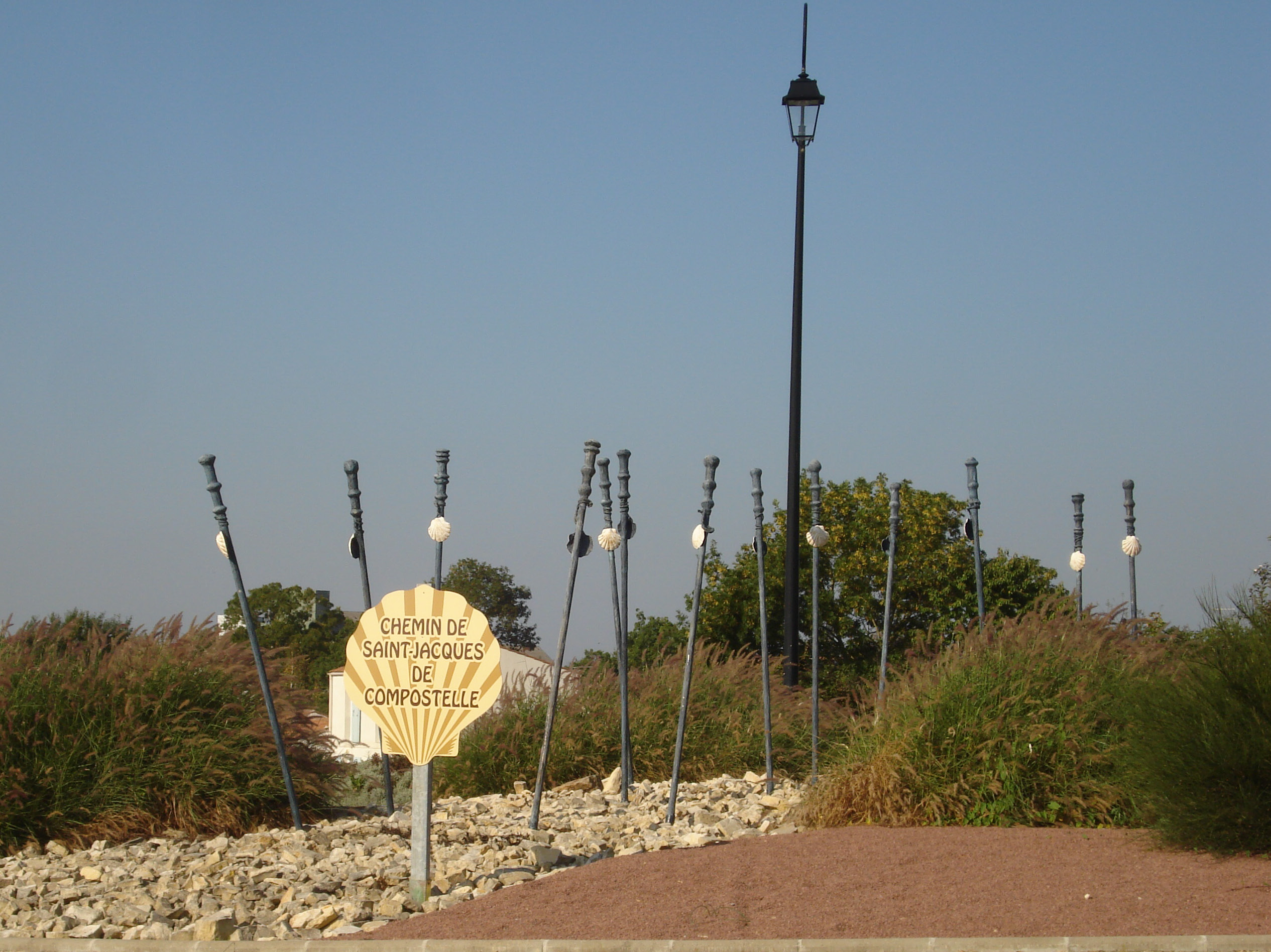|
Church Of Saint-Pierre D'Aulnay
The Church of Saint-Pierre d'Aulnay (French: Église Saint-Pierre d'Aulnay) is an important Medieval church on the way to Saint-Jacques de Compostelle, in Aulnay, Charente-Maritime. The Church is thought to have been built in 1120–1140. Numerous oriental influences can be seen in its designs. For example, the first arc of the gate is inspired from Oriental designs. Designs of elephants also find their origin in Oriental designs."Les représentations d'éléphants sur un chapiteau de l'église d'Aulnay puisent ainsi leurs modèles dans le décor des coffrets d'ivoire des tissus et des soiries d'Orient" in ''Cité de l'Architecture et du Patrimoine, Guide du Musée'' p.48, Numerous mouldings of the Church are visible at the Cité de l'Architecture et du Patrimoine in Paris Paris () is the capital and most populous city of France, with an estimated population of 2,165,423 residents in 2019 in an area of more than 105 km² (41 sq mi), making it the 30th most dense ... [...More Info...] [...Related Items...] OR: [Wikipedia] [Google] [Baidu] |
Saint-Jacques De Compostelle
Santiago de Compostela is the capital of the autonomous community of Galicia, in northwestern Spain. The city has its origin in the shrine of Saint James the Great, now the Cathedral of Santiago de Compostela, as the destination of the Way of St. James, a leading Catholic pilgrimage route since the 9th century. In 1985, the city's Old Town was designated a UNESCO World Heritage Site. Santiago de Compostela has a very mild climate for its latitude with heavy winter rainfall courtesy of its relative proximity to the prevailing winds from Atlantic low-pressure systems. Toponym ''Santiago'' is the local Galician evolution of Vulgar Latin ''Sanctus Iacobus'' " Saint James". According to legend, ''Compostela'' derives from the Latin ''Campus Stellae'' (i.e., "field of the star"); it seems unlikely, however, that this phrase could have yielded the modern ''Compostela'' under normal evolution from Latin to Medieval Galician. Other etymologies derive the name from Latin ''compositum'', l ... [...More Info...] [...Related Items...] OR: [Wikipedia] [Google] [Baidu] |
Aulnay, Charente-Maritime
Aulnay, commonly referred to as Aulnay-de-Saintonge (), is a commune in the Charente-Maritime department, region of Nouvelle-Aquitaine (before 2015: Poitou-Charentes), France. The inhabitants of the commune are known as ''Aulnaysiens'' or ''Aulnaysiennes''. Geography Aulnay is located on the ''Via Turonensis''. one of the Ways of St. James some 45 km east by south-east of Surgères and 17 km north-east of Saint-Jean-d'Angély. Access to the commune is by the D950 from Les Églises-d'Argenteuil in the south-west which passes through the commune just west of the town and continues to La Villedieu in the north. The D121 comes from Saint-Georges-de-Longuepierre in the north-west passing through the town and continuing south to Cherbonnières. The D129 comes from Varaize in the south passing through the town and continuing north-east to Saint-Mandé-sur-Brédoire. The D133 goes from the town south-east to Néré. In the commune there is the village of La Cressoniere w ... [...More Info...] [...Related Items...] OR: [Wikipedia] [Google] [Baidu] |
Cité De L'Architecture Et Du Patrimoine
The Cité de l'architecture et du patrimoine (Architecture and Heritage City) is a museum of architecture and monumental sculpture located in the Palais de Chaillot (Trocadéro), in Paris, France. Its permanent collection is also known as Musée national des monuments français (National Museum of French Monuments). It was established in 1879 by Eugène Viollet-le-Duc. The museum was renovated in 2007 and covers 9,000 square meters of gallery space. Alongside temporary exhibitions, it is made of three permanent exhibits : * Galerie des moulages: casts of monumental French architecture from the 12th to the 18th centuries, such as portals of cathedrals. * Galerie des peintures murales et des vitraux: copies of murals and stained glasses from French Romanesque and Gothic churches. * Galerie moderne et contemporaine: models of French and international architecture from 1850 to the present day. The Cité also houses: * the Institut français d'architecture (French Institute of Archit ... [...More Info...] [...Related Items...] OR: [Wikipedia] [Google] [Baidu] |
Paris
Paris () is the capital and most populous city of France, with an estimated population of 2,165,423 residents in 2019 in an area of more than 105 km² (41 sq mi), making it the 30th most densely populated city in the world in 2020. Since the 17th century, Paris has been one of the world's major centres of finance, diplomacy, commerce, fashion, gastronomy, and science. For its leading role in the arts and sciences, as well as its very early system of street lighting, in the 19th century it became known as "the City of Light". Like London, prior to the Second World War, it was also sometimes called the capital of the world. The City of Paris is the centre of the Île-de-France region, or Paris Region, with an estimated population of 12,262,544 in 2019, or about 19% of the population of France, making the region France's primate city. The Paris Region had a GDP of €739 billion ($743 billion) in 2019, which is the highest in Europe. According to the Economis ... [...More Info...] [...Related Items...] OR: [Wikipedia] [Google] [Baidu] |
Islamic Influences On Christian Art
Islamic influences on Western art refers to the stylistic and formal influence of Islamic art, defined as the artistic production of the territories ruled by Muslims from the 7th century onward, on European Christian art. Western European Christians interacted with Muslims in Europe, Africa, and the Middle East and formed a relationship based on shared ideas and artistic methods. Islamic art includes a wide variety of media including calligraphy, illustrated manuscripts, textiles, ceramics, metalwork, and glass, and because the Islamic world encompassed people of diverse religious backgrounds, arstists and craftsmen were not always Muslim, and came from a wide variety of different backgrounds. Glass production, for example, remained a Jewish speciality throughout the period. Christian art in Islamic lands, such as that produced in Coptic Egypt or by Armenian communities in Iran, continued to develop under Islamic rulers. Islamic decorative arts were highly valued imports to Euro ... [...More Info...] [...Related Items...] OR: [Wikipedia] [Google] [Baidu] |



